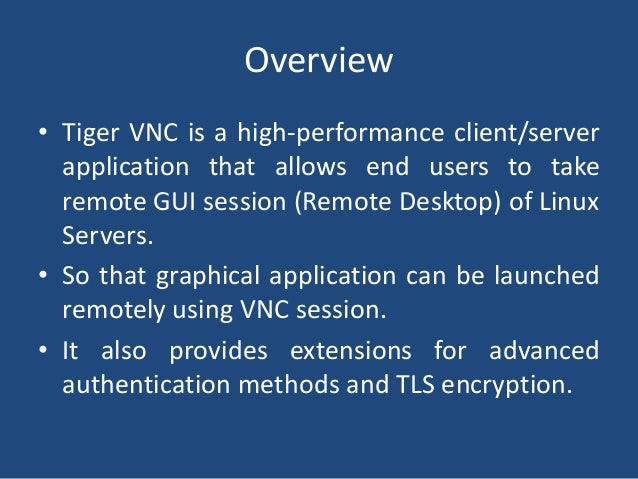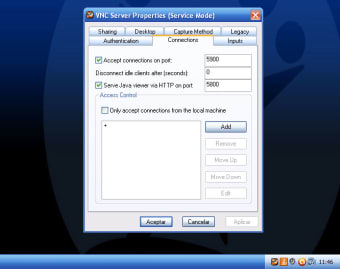

Ssh-copy-id make a tunnel between you local machine and the remote server

Just in case you want to do locally and no put remote the connection Now you are able to connect to the server via vnc Systemctl start status enable open the port 5901 in my case because i'm using display 1 in your case you need to looking with port is usingįirewall-cmd -permanent -add-port=5901/tcp Now reload the systemd manager configuration to apply the recent changes and then start the VNC service, enable it to auto-start at system boot time and check if it is up and running using the following systemctl commands, rembeber the number specify is the display could be 1 or 0 or 2 depending of the display you are using Sed -i 's/enforcing/disabled/g' /etc/selinux/config

Normally selinux can cause issues to make simple just disable selinux This is the port you have to use while connecting to the server, from the client. If the display number is 1, then the VNC server will run on display port number 5901.
#Tigervnc viewer windows mac os
By default, VNC uses TCP port 5900+N, where N is the display number. Make sure to uninstall TigerVNC or any other VNC implementations before proceeding. In particular from Windows 7 Professional to OS X Yosemite (10.11) and to OS X High Sierra (10.13 w/ latest updates), the 'OS X Authentication' that Mac OS builtin VNC requires, with username and password and no tweaks to the VNC server side, posed no problem.
#Tigervnc viewer windows software
They can be easily installed using standard Windows Installer. You can try following: Start the vncserver to accept connection from all network address: vncserver -localhost no Check the status of the kex again by: kex -status It should now list the vnc sessions Type the following command to start the kali windows: kex -win -sl Leonzxd 2 yr. Download Latest Version tigervnc64-1.13.1.exe (7.1 MB) Get Updates Home Other Useful Business Software Collect, search, and correlate detailed logs from applications, infrastructure, and network devices for faster troubleshooting and investigation. Installation Starting from the version 2.5, TightVNC comes in the form of MSI-packages. Vi the following configuration in it (remember to replace tecmint with your actual username).ĮxecStartPre=/bin/sh -c '/usr/bin/vncserver -kill %i > /dev/null 2>&1 || :'ĮxecStart=/usr/bin/vncserver -autokill %iīefore we move any further, let’s briefly understand how the VNC server listens to requests. TightVNC distribution for Windows includes both the server and the viewer parts available under GNU GPL license v.2 and commercial license HTML. Start by creating a configuration file named as follows. In this step, you have to configure the TigerVNC server to start a display for the above user on the system. Next, switch to the user you want to run and use the VNC program by setting the user’s VNC server password (which should be at least six characters)
#Tigervnc viewer windows install
Then uncomment this line to force the login screen to use Xorg.ĭnf install tigervnc-server tigervnc-server-module Open the GNOME Display Manager (GDM) configuration file using your favorite command line editor.


 0 kommentar(er)
0 kommentar(er)
